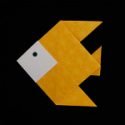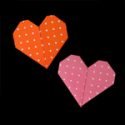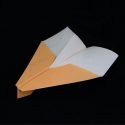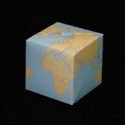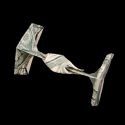Marvelous Modular Origami
by Meenakshi Mukerji
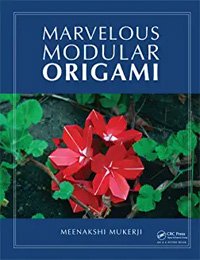
This book is 75 pages in length and has instructions for 30 origami units. A typical feature of modular origami is that the units can be assembled in different ways; thus, the 30 origami units shown in this book can produce more than 30 origami models.
Marvelous Modular Origami is divided into six sections. The beginning of each section has color photos of the finished origami models. Each section has instructions (line drawings with color) on how to fold the origami units. Instructions on how to assemble the units are provided at the beginning of each section usually only once.
Daisy Sonobe. When assembled, units form a white (back side of origami paper) pinwheel pattern, or a daisy pattern.

Snow-Capped Sonobe 1: When assembled, the white parts of the paper converge at the corner giving the appearance of snow at the peak of mountains.

Striped Sonobe: Obvious from its name, this origami unit forms striking stripes.

Swan Sonobe: this unit is so named because the assembled models have a pattern which looks like the head and neck of an origami bird.

|
|||
(hexahedron) |
(cube) |
(stellated octahedron) |
|
It should be noted that the units above can be assembled into many forms including a 12-unit cube, a 30-unit stellated icosahedron, a 60-unit spiked pentakis dodecahedron, a 90-unit dodecahedral model, and even larger assemblies.
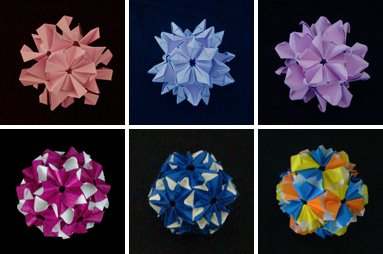
Phlox Ball Stella FanTastic
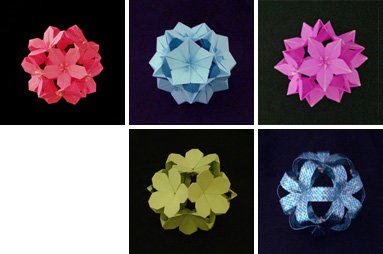
hidden locks: Plumeria Floral Ball Petunia Floral Ball
In this book, Mukerji offers instructions to 10 origami dodecahedra: each more fantastical with increasing swirls and layers. Although the units are not terribly difficult to fold, they do require detailed attention and are un-forgiving. Some of the units are made from a template while others require cutting to create locks.
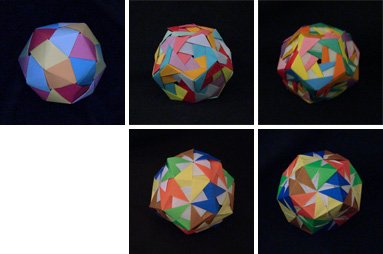
Daisy Dodecahedron 1 Daisy Dodecahedron 2
Last but not least, section 6 of Marvelous Modular Origami offers 3 miscellaneous models to complete the set of 30. Lightning Bolt (starts with A6 paper) and Star Window are Sonobe-like models but have openings. Twirl Octahedron is a composite model using two different types of units.

Summary of Marvelous Modular Origami
Marvelous Modular Origami has many models which will keep you busy for days. The floral balls in section 3 are most satisfying: they are easy to construct and look phenomenal. The dodecahedra are challenging and would be appreciated by the tenacious and dedicated paper folders. Mukerji’s variations on the Sonobe unit will inspire you to create with your own designs.
If you love this book, be sure to check Meenakshi Mukerji’s next 2 books:
Ornamental Origami and Origami Inspirations
Which of her 3 books is the best? Mukerji says that choosing a favorite book is like choosing a favorite child: each has its own strengths and beauty.
- buy Marvelous Modular Origami here
- read about modular origami
- get free modular origami instructions
- see more book reviews
- go to Home Page
- go to Site Map
-
Books with Modular Origami
- Marvelous Modular Origami by Mukerji
- Polyhedron Origami for Beginners (Origami Classroom) by M Kawamura
- Origami Wreaths and Rings by David Petty
- Unit Origami: Multidimensional Transformations by Tomoko Fuse
- Unit Polyhedron Origami by Tomoko Fuse
- Beginner’s Book of Modular Origami Polyhedra: The Platonic Solids by Rona Gurkewitz and Bennett Arnstein
- 3-D Geometric Origami by Rona Gurkewitz and Bennett
- Modular Origami Polyhedra (Origami) by Lewis Simon, Bennett Arnstein, and Rona Gurkewitz
- Multimodular Origami Polyhedra: Archimedeans, Buckyballs and Duality by Rona Gurkewitz and Bennett Arnstein
- Unfolding Mathematics with Unit Origami by Betsy Franco
Please Help
Please help by reporting broken links so that we can fix them. One easy message from you can save us hours and hours of clicking. Thanks!
-
More Origami Diagrams and Instructions…
-
These free origami instructions are made available to you by the paper folding community at large. If you have a diagram you would like to share, or if your diagram is listed here and you wish to have it removed, please Contact Us. Diagrams are intended for personal use. Copyright of the models lie with the origami creators and designers. Please contact the designer and/or creator directly for non-private usage of a model and/or artwork.









